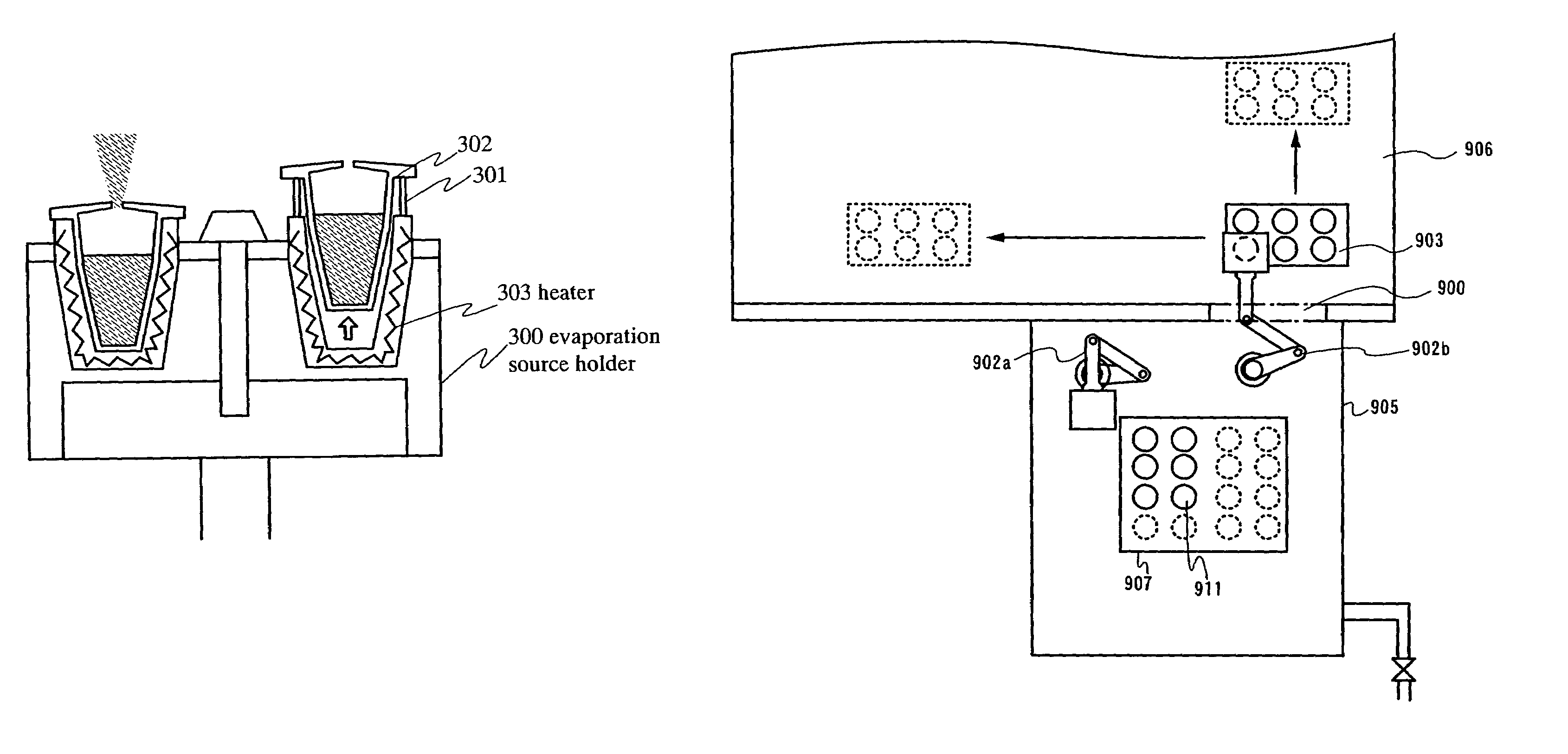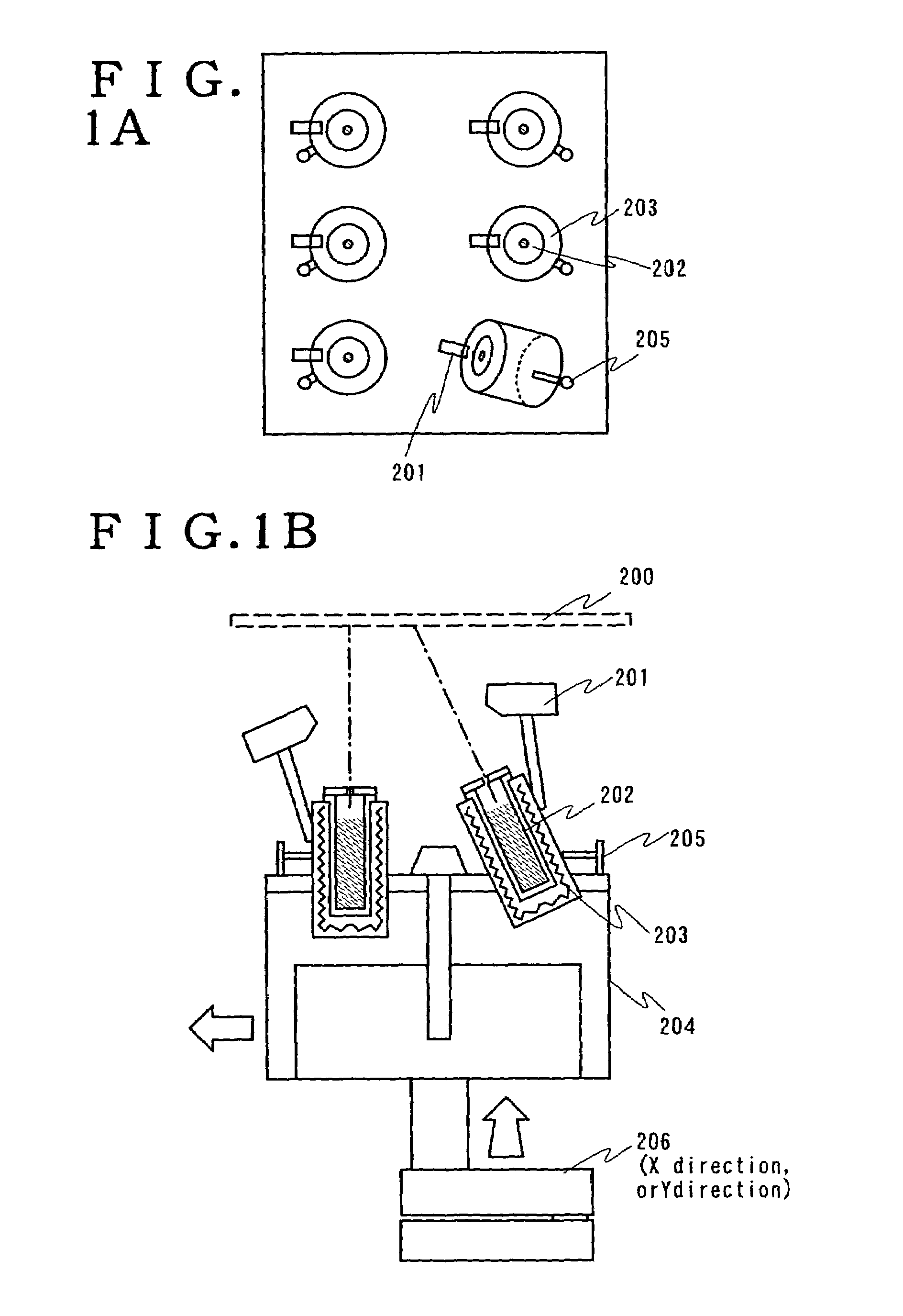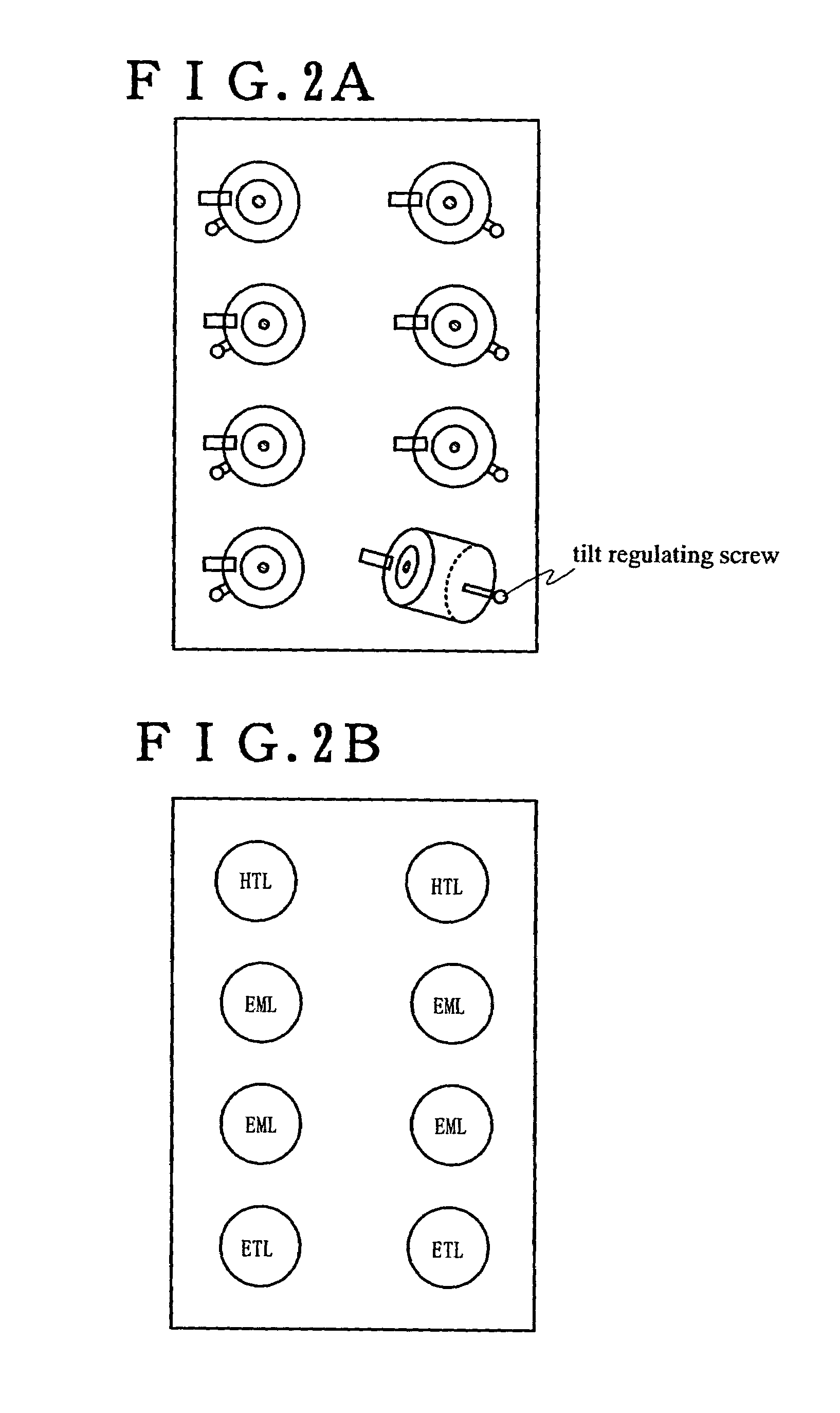Fabrication system, light-emitting device and fabricating method of organic compound-containing layer
a technology of organic compound and light-emitting device, which is applied in the direction of vacuum evaporation coating, electroluminescent light sources, coatings, etc., can solve the problems of uneven film thickness between a center portion and a marginal portion of a substrate, the efficiency of utilizing expensive el materials is extremely low, and the cost of fabricating a light-emitting device becomes very high, so as to achieve the reduction of the thermal coefficient, the effect of reducing th
- Summary
- Abstract
- Description
- Claims
- Application Information
AI Technical Summary
Benefits of technology
Problems solved by technology
Method used
Image
Examples
embodiment mode 1
[0103]An evaporation source holder that is moved in X-direction or Y-direction in a deposition chamber will be described with reference to FIG. 1A and FIG. 1B.
[0104]FIG. 1A is a top surface view showing an evaporation source holder 204 having six containers (crucibles) 202. FIG. 1B is a cross-sectional view showing the evaporation source holder 204. Each six crucible has a film-thickness monitor 201. Viewed from the cross-section of the evaporation source holder, one of a container is tilted using a tilt regulating screw 205 against the surface of a substrate 200. Both a tilt regulating screw 205 and a film thickness monitor 201 are located at the side of the container body. The container can be tilted with a heater 203. The heater 203 is used here to carry out vapor deposition by resistance heating.
[0105]The vapor deposition can be controlled by using a sliding type shutter (not shown). For example, when an evaporation holder is not beneath the substrate 200, the vapor deposition c...
embodiment mode 2
[0111]FIG. 3A and FIG. 3B are a views showing an evaporation holder that has no shutter.
[0112]FIG. 3A is a view showing the cross sectional view of an evaporation holder 300 in which only one of them carries out vapor deposition. Vapor deposition is stopped by cooling a crucible 302 by lifting the crucible 302 for separating from a heater using a lifting pin 301.
[0113]There has been a problem that evaporation materials are still heated by remaining heat even if a power source of the heater is turned OFF, and evaporation materials are evaporated on the shutter, then, a shutter is fixed and stopped moving.
[0114]The problem can be solved by the lifting pin 301 shown in FIG. 3A. In order to separate the crucible 302 from the heater, the cross sectional view of the opening of the crucible 302 is formed to be larger than an area of the bottom thereof. The shape of the heater is formed in accordance with the shape of the crucible 302. Forming into such shape, the heater can be separated fr...
embodiment mode 3
[0117]FIG. 6A is a flowchart showing that cleaning is carried out every time after carrying out deposition to one substrate.
[0118]First, an evaporation source is heated before transporting into a deposition chamber, and a substrate is transported to the deposition chamber, then, deposition is started. Materials for a hole transporting layer (HTL), materials for a light emitting layer (EML), materials for an electron transporting layer (ETL) using a deposition mask are sequentially deposited. When the monochrome light emitting device is formed, only one deposition mask is used. Then, vapor deposited substrate is transported from the deposition chamber. In order to clean the deposited materials that are adhered on a deposition mask after transportation of the substrate, the deposited materials are vaporized by plasma generated by a plasma generator in the deposition chamber and exhausted out of the deposition chamber.
[0119]Lastly, before the next transportation of a substrate, an evap...
PUM
| Property | Measurement | Unit |
|---|---|---|
| Temperature | aaaaa | aaaaa |
| Distance | aaaaa | aaaaa |
Abstract
Description
Claims
Application Information
 Login to View More
Login to View More - R&D
- Intellectual Property
- Life Sciences
- Materials
- Tech Scout
- Unparalleled Data Quality
- Higher Quality Content
- 60% Fewer Hallucinations
Browse by: Latest US Patents, China's latest patents, Technical Efficacy Thesaurus, Application Domain, Technology Topic, Popular Technical Reports.
© 2025 PatSnap. All rights reserved.Legal|Privacy policy|Modern Slavery Act Transparency Statement|Sitemap|About US| Contact US: help@patsnap.com



